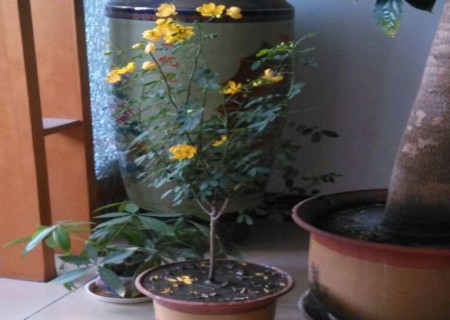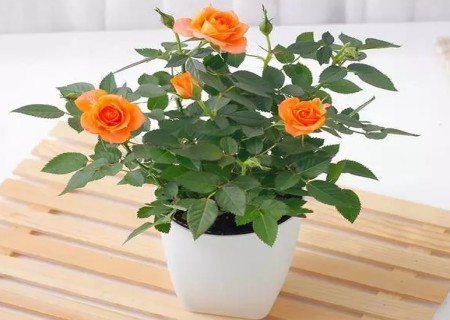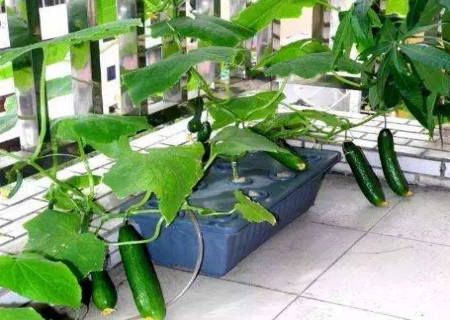Planting techniques of potted yellow locust
Robinia pseudoacacia, also known as Robinia pseudoacacia and Robinia pseudoacacia, is a plant of the genus Cassia in Leguminosae. It is derived from the cross breeding between Chinese traditional Robinia pseudoacacia and American Phnom Penh Robinia pseudoacacia and double pod Robinia pseudoacacia. The tree has the advantages of fast growth, long flowering period, luxuriant flowers, strong growth potential and less diseases and insect pests. It is a rare flowering shrub with high ornamental value in autumn and winter, and it can be potted or made bonsai.
Blooming every August, buds such as golden beans, flowers such as golden butterflies, vigorous growth, luxuriant branches, large and bright flowers, flowers (duck egg yolk) golden yellow, so it has the laudatory name of Jubao Golden Tree. Frost comes, hospitality does not decline, leaves do not fall flowers, fill the gap of no ornamental flowers and trees in early winter, not spring, better than spring, good taste. Huanghua Robinia pseudoacacia is evergreen in the subtropics and is suitable for land planting in areas where the temperature is above minus 17 degrees south of the Great Wall.

[method of reproduction]
In East China, because of the low temperature in winter, Robinia pseudoacacia can not bear fruit, so it can be propagated by cutting, the most commonly used are old wood cuttings and tender wood cuttings. The cuttings of old branches were cut by strong cutting in winter and inserted into peat soil matrix with the row spacing of 6cm × 6cm. The cuttings were usually carried out in December, and the seedlings were transferred from the end of March to the beginning of April next year. From June to August, the softwood cuttings were cut with the semi-lignified branches left by the pruning model and inserted into the seedling bed based on perlite and vermiculite according to 6cm × 6cm.
The root of Sophora japonica has strong tillering, and it can also be inserted by root. The root planting time is generally in early spring, and the root ear about the length of 10cm is selected, cut vertically according to the row spacing of 10cm × 10cm, then cover with thin soil, then cover with grass or plastic film, and transplant when the seedling height is 15cm.
[key points of cultivation]
When planting, remove the top of the plant, apply rotten organic fertilizer in the planting hole, and mix well with the soil. Pour enough water after planting. The survival logistics applied thin fertilizer to promote the growth of lateral branches. Fertilize 4 times a year after that. It grows rapidly in warm areas. In order to make the tree graceful, it should be pruned properly, but it should not be overpruned or re-trimmed so as to hinder its growth. During the flowering period, withered inflorescences should be removed at any time to promote the germination of new branches, produce new inflorescences and make them bloom for a long time. In cold areas, potted plants can be planted in winter and kept warm in a greenhouse for the winter.
[potted plant management]
The main results are as follows: 1. Timely cutting and cutting into the pot, in late winter and early spring, cutting branches or roots before sprouting leaves of Sophora japonica, because the locust is in a state of accumulating nutrients and semi-dormancy, which is the key to successful potting and improving the survival rate.
2. Pay attention to shading and regular watering. Special attention should be paid to strengthening management after the first sprout to prevent dehydration and atrophy, and to realize that the second new bud can be regarded as a real survival.
3. After potting, the yellow locust should be placed in a cool place first, and then gradually moved to a sunny place after about 10 days for normal management.
4. Pruning reasonably to control the excessive length of branches and promote the germination of lateral branches. When the branches of Robinia pseudoacacia are about 20cm, they should be pruned, usually 1-2 times, combined with climbing and shaping to keep the crown intact and beautiful.
5. Rational fertilization. Timely control of fertilizer and water. When squatting seedlings are carried out from August to September, the branches grow slowly, which is beneficial to the storage of nutrients and the differentiation of flower buds. Overlong branches can not be pruned, and bending and climbing methods are applied.
6. When potted Robinia pseudoacacia is placed in a sunny place, thin fertilizer should be applied once to promote sprouting and strong bud. During the later growth period, compound fertilizer should be applied twice a month, and thin fertilizer can be applied once during pruning. The fertilizer at this stage should mainly contain N and K fertilizer. From July to mid-August, the fertilizer should be mainly P fertilizer, while N and K fertilizer should be applied little or no.
Time: 2019-05-24 Click:
- Prev

Pot planting technique of rose flower
Roses are loved by the world not only because their spirit is admired, but also because they are covered with treasures. Roses are flowers that girls like to receive very much. it not only symbolizes hot love, but also can be very pragmatic. Sun-dried roses can make tea and snacks.
- Next

Planting techniques of potted Fruit Cucumber
Fruit cucumber is a climbing plant, climbing growth. The plant grows luxuriantly and can be designed into a certain shape; more than 1 melon per node, each plant can bear 5 to 6 melons at the same time, each plant can bear 30 to 50 melons, melon color or light green or milky white, which can reflect the effect of luxuriant leaves and fruitful fruits, that is, edible.
Related
- Fuxing push coffee new agricultural production and marketing class: lack of small-scale processing plants
- Jujube rice field leisure farm deep ploughing Yilan for five years to create a space for organic food and play
- Nongyu Farm-A trial of organic papaya for brave women with advanced technology
- Four points for attention in the prevention and control of diseases and insect pests of edible fungi
- How to add nutrient solution to Edible Fungi
- Is there any good way to control edible fungus mites?
- Open Inoculation Technology of Edible Fungi
- Is there any clever way to use fertilizer for edible fungus in winter?
- What agents are used to kill the pathogens of edible fungi in the mushroom shed?
- Rapid drying of Edible Fungi

